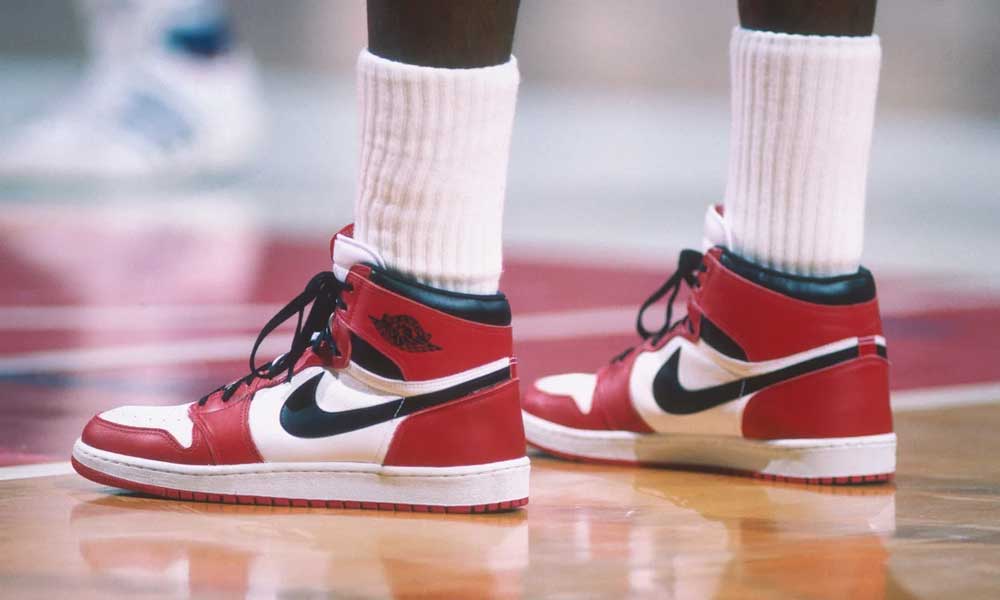Tinker Hatfield: The Designer Behind Nike’s Iconic Air Jordan Sneakers

The Air Jordan sneaker is not just a shoe; it’s a cultural icon. Born out of a collaboration between Nike and basketball legend Michael Jordan, the Air Jordan line has evolved into one of the most successful and influential sneaker lines in history. The Air Jordan’s success goes beyond its athletic performance features—it’s a symbol of style, status, and innovation. At the heart of this groundbreaking footwear revolution is Tinker Hatfield, the visionary designer who brought the Air Jordan to life. In this post, we will explore the story behind Tinker Hatfield’s iconic designs for the Air Jordan sneakers and how they changed the sneaker industry forever.
2. Tinker Hatfield: A Visionary Designer at Nike
Tinker Hatfield is a name synonymous with innovation in the world of footwear design. Born in 1952, Hatfield initially pursued a career in architecture before turning his attention to the world of sneakers. In 1981, he joined Nike as a designer, a move that would change the course of sneaker history. Hatfield’s background in architecture gave him a unique approach to design—one that combined functionality with artistic vision.
Hatfield is perhaps best known for his work on the Air Jordan line, but his influence extends far beyond that. He designed many of Nike’s most iconic sneakers, including the Nike Air Max series and the Nike Air Trainer. His designs were often bold and experimental, pushing the boundaries of what a sneaker could be in terms of performance, style, and technological innovation. Hatfield’s ability to combine art and function made him one of the most influential footwear designers of all time.
3. The Birth of the Air Jordan: A Game-Changing Sneaker
The story of the Air Jordan begins in 1984, when Michael Jordan was a rising star in the NBA. At the time, Jordan was playing for the Chicago Bulls, but he had not yet reached the superstardom that would make him a household name. Nike, which was relatively new to the basketball shoe market, saw an opportunity to partner with Jordan and create a signature sneaker that would elevate both the brand and the player’s status.
Initially, Jordan was hesitant to sign with Nike, as he had a strong preference for Converse, which was the dominant basketball brand at the time. However, after meeting with Nike executives and seeing the passion they had for the collaboration, Jordan signed a deal. This led to the creation of the Air Jordan 1, a sneaker that would change the basketball shoe market forever.
Tinker Hatfield was brought on board to design the Air Jordan 3, which would become the first Air Jordan sneaker to feature Hatfield’s innovative ideas. Hatfield’s design for the Air Jordan 3 introduced several key features that would become staples in the Air Jordan line, including a visible Air cushioning system in the sole, a durable leather upper, and the now-iconic elephant print design.
4. The Design Process: Innovation and Functionality
What set Tinker Hatfield apart from other sneaker designers was his ability to blend cutting-edge technology with creative design. When he was tasked with designing the Air Jordan 3, Hatfield knew that the shoe needed to perform at the highest level of basketball while also being stylish and unique. He drew inspiration from a variety of sources, including architecture and modern art, to create a sneaker that would push the boundaries of what a basketball shoe could be.
One of Hatfield’s most revolutionary design features was the visible Air cushioning unit in the sole of the shoe. This allowed the wearer to see the technology that provided the sneaker’s cushioning, which was a major departure from the traditional closed-air units that were used in previous models. The exposed Air unit became a signature element of the Air Jordan line, eventually becoming one of the most recognizable features in sneaker design.
Hatfield also incorporated the now-famous elephant print design on the Air Jordan 3, adding a unique texture to the sneaker that made it stand out from other basketball shoes on the market. The combination of these elements, along with a sleek, modern silhouette, made the Air Jordan 3 an instant hit.
5. The Impact of the Air Jordan on Nike and Sneaker Culture
The release of the Air Jordan 3 in 1988 marked a turning point not only for Nike but for the entire sneaker industry. The Air Jordan 3 became the first signature sneaker to gain mainstream success, and it helped propel Michael Jordan to the status of global icon. The sneaker became a cultural phenomenon, not just for its performance on the court but for its style and association with Jordan’s persona.
The success of the Air Jordan 3 set the stage for subsequent models in the Air Jordan line, each of which introduced new and innovative design features. Over the years, the Air Jordan line has released numerous iconic models, each with its own distinct style and technological advancements. The Air Jordan sneaker became synonymous with performance, fashion, and a level of exclusivity that made it highly coveted by sneakerheads and basketball fans alike.
The release of the Air Jordan 3 also helped to establish Nike as a dominant force in the basketball footwear market, and it paved the way for the company’s continued success with the Air Jordan brand. Today, the Air Jordan line remains one of the most successful and influential sneaker lines in the world.
6. Legacy and Influence: How Tinker Hatfield’s Designs Shaped the Sneaker Industry
Tinker Hatfield’s designs for the Air Jordan sneakers have had a profound and lasting impact on the sneaker industry. Hatfield’s willingness to experiment with new materials, technology, and aesthetics set a new standard for sneaker design. His work on the Air Jordan 3, in particular, has been widely regarded as one of the most important moments in sneaker history.
Hatfield’s influence can still be seen in the design of modern basketball shoes and lifestyle sneakers. His use of visible Air cushioning, bold colorways, and unique textures has become a hallmark of the Air Jordan line and has been adopted by many other sneaker brands. The Air Jordan sneaker also helped to define the culture of sneaker collecting, with limited-edition releases and exclusive colorways becoming a key part of sneaker culture.
Beyond basketball, Hatfield’s designs for Nike have influenced the broader world of fashion and streetwear. The Air Jordan sneaker has transcended its role as a performance shoe, becoming a symbol of style and cultural significance. Hatfield’s work helped to elevate sneakers to a level of artistry, where design, technology, and culture intersect.
7. Conclusion: Tinker Hatfield and the Enduring Power of Air Jordan
Tinker Hatfield’s contribution to the world of sneaker design cannot be overstated. His work on the Air Jordan line, particularly the Air Jordan 3, revolutionized the way sneakers were designed, marketed, and perceived. Hatfield’s innovative approach to combining performance and style, along with his ability to think outside the box, helped to make the Air Jordan an iconic brand that continues to shape the sneaker industry today.
The Air Jordan line’s enduring popularity is a testament to Hatfield’s genius as a designer and to Michael Jordan’s lasting legacy as one of the greatest basketball players of all time. Together, they helped create a sneaker line that has transcended the basketball court to become a global symbol of style, culture, and innovation.
8. References
- Hatfield, T. (1998) Designing the Air Jordan: The Evolution of a Cultural Icon. Nike Publishing.
- Brown, D. (2005) Sneaker Wars: The Battle That Defined a Generation. New York: HarperCollins.
- Knight, P. (2003) Shoe Dog: A Memoir by the Creator of Nike. New York: Scribner.
- Sweeney, J. (2011) The Influence of Tinker Hatfield on Sneaker Design. Footwear Design Review, 7(2), 101-113.

When you see the iconic Nike swoosh, you immediately think of athletic performance, strength, and style. This simple, yet powerful…





